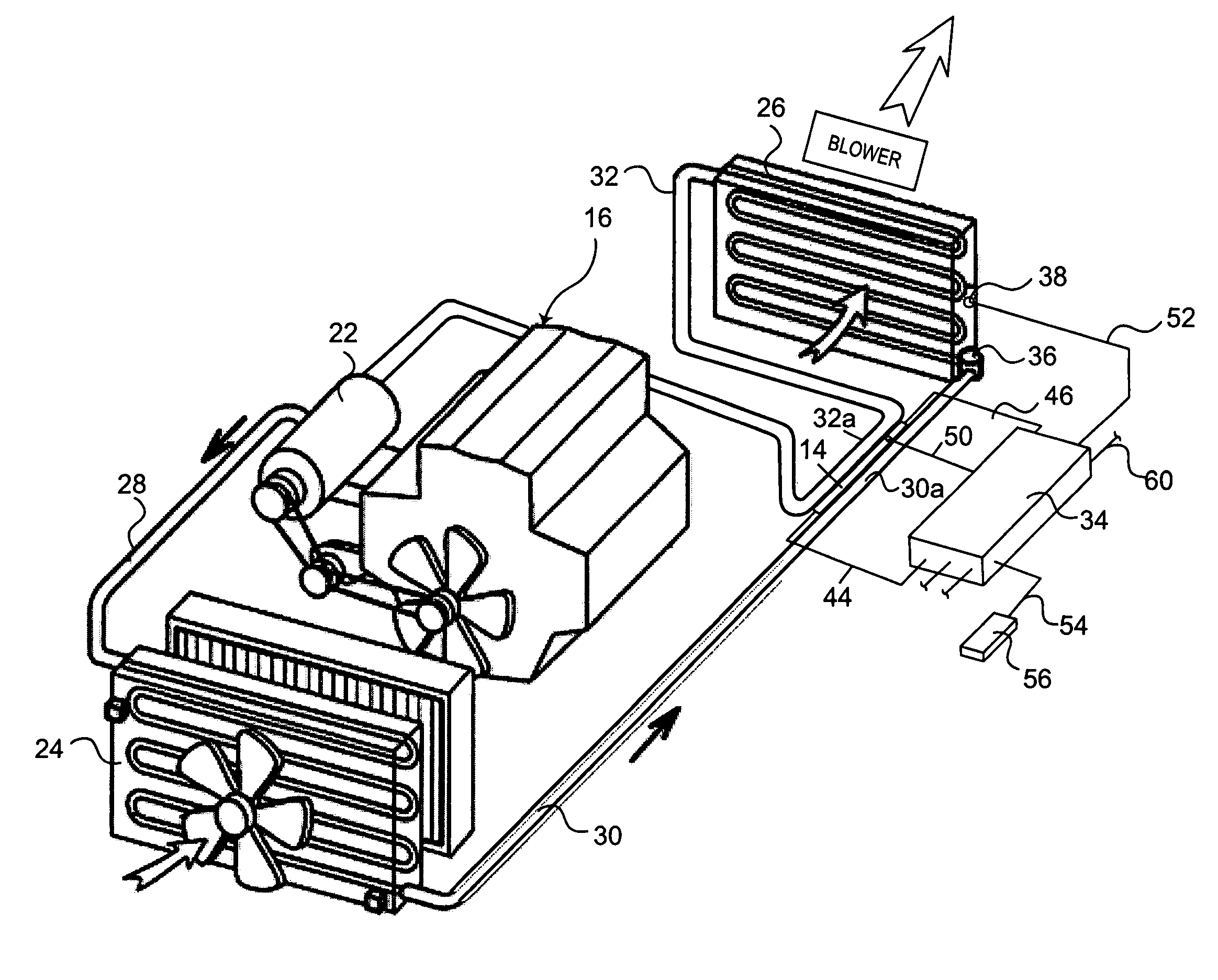Vehicle air conditioning system
a vehicle air conditioning and passenger compartment technology, applied in the field of vehicle air conditioning systems, can solve the problems that the effectiveness of the vehicle air conditioning system can sometimes be insufficient to adequately cool the passenger compartment of the vehicle, and achieve the effect of increasing the cooling capacity of the system
- Summary
- Abstract
- Description
- Claims
- Application Information
AI Technical Summary
Benefits of technology
Problems solved by technology
Method used
Image
Examples
second embodiment
[0057]Referring now to FIG. 7, a portion of a vehicle air conditioning system 12′ in accordance with a second embodiment will now be explained. In view of the similarity between the first and second embodiments, the parts of the second embodiment that are identical to the parts of the first embodiment will be given the same reference numerals as the parts of the first embodiment. Moreover, the descriptions of the parts of the second embodiment that are identical to the parts of the first embodiment may be omitted for the sake of brevity. The parts of the second embodiment that differ from the parts of the first embodiment will be indicated with a single prime (′).
[0058]In the second embodiment, all the portions of the vehicle air conditioning system 12′ are generally the same as the vehicle air conditioning system 12 of the first embodiment, except that the second high pressure tube 30, the low pressure tube 32 and the thermoelectric device 14 are replaced in the second embodiment w...
third embodiment
[0060]Referring now to FIG. 8, a portion of a vehicle air conditioning system 12″ in accordance with a third embodiment will now be explained. In view of the similarity between the first and third embodiments, the parts of the third embodiment that are identical to the parts of the first embodiment will be given the same reference numerals as the parts of the first embodiment. Moreover, the descriptions of the parts of the third embodiment that are identical to the parts of the first embodiment may be omitted for the sake of brevity. The parts of the third embodiment that differ from the parts of the first embodiment will be indicated with a double prime (″).
[0061]The third embodiment includes the thermoelectric device 14, the compressor 22, the condenser 24, the evaporator 26, the first high pressure tube 28, the second high pressure tube 30 and the controller 34 (not shown in FIG. 8). These components are generally the same or identical to the similarly named components of the fir...
fourth embodiment
[0062]Referring now to FIG. 9, a portion of a vehicle air conditioning system 12′″ in accordance with a fourth embodiment will now be explained. In view of the similarity between the prior embodiments and this fourth embodiment, the parts of the fourth embodiment that are identical to the parts of the prior embodiments will be given the same reference numerals as the parts of the prior embodiments. Moreover, the descriptions of the parts of the fourth embodiment that are identical to the parts of the prior embodiments may be omitted for the sake of brevity.
[0063]The fourth embodiment includes the thermoelectric device 14, the compressor 22, the condenser 24, the evaporator 26, the first high pressure tube 28, the second high pressure tube 30 and the controller 34 (not shown in FIG. 8). These components are generally the same or identical to the similarly named components of the first embodiment. However, in the fourth embodiment, the low pressure tube 32″ of the third embodiment is ...
PUM
 Login to View More
Login to View More Abstract
Description
Claims
Application Information
 Login to View More
Login to View More - R&D Engineer
- R&D Manager
- IP Professional
- Industry Leading Data Capabilities
- Powerful AI technology
- Patent DNA Extraction
Browse by: Latest US Patents, China's latest patents, Technical Efficacy Thesaurus, Application Domain, Technology Topic, Popular Technical Reports.
© 2024 PatSnap. All rights reserved.Legal|Privacy policy|Modern Slavery Act Transparency Statement|Sitemap|About US| Contact US: help@patsnap.com










